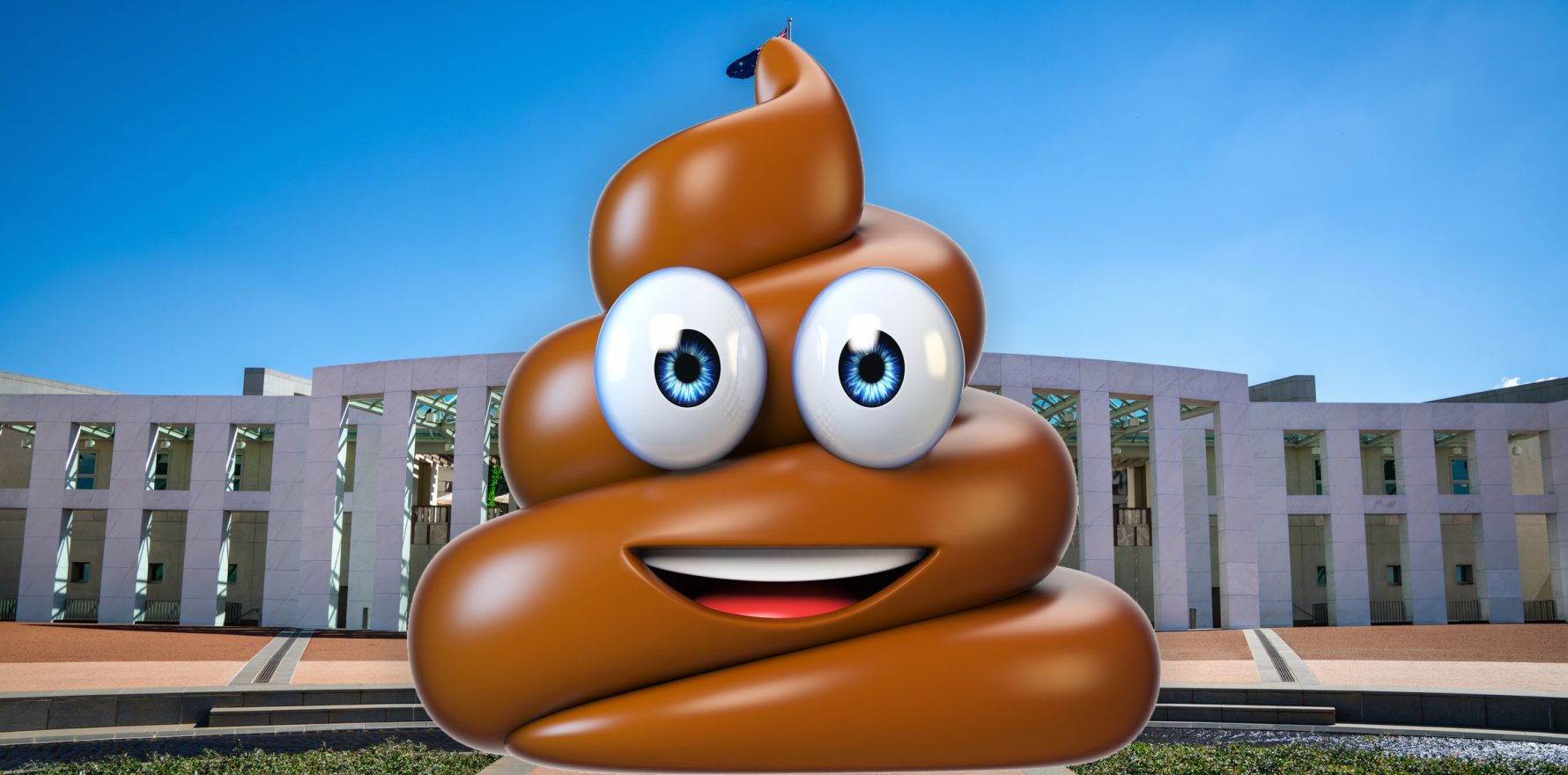Another fortnight of absolute gibberish being talked in Canberra. Spare me.
It’s weeks like this that make me question how any part of the mechanism of government actually operates at all, readers.
The cynic in me – I am 99.9% cynic and 0.1% chocolate digestive – realised about halfway through this week that the new Aged Care Act and the bulk-billing practice incentive payment were scheduled for launch on 1 November, not because that gave everybody a chance to get it right, but because that date fell in the middle of a Parliamentary sitting fortnight.
Meaning the politicians could spend a week talking bull-pucky while anticipating the launch, and then a week talking horse-pucky about how wonderfully it’s going.
But maybe I need to eat more chocolate digestives.
On two big policy areas, the spin-doctoring from the government – both political and bureaucratic – has been jaw-dropping. Jaw. Dropping.
Aged care
It has been another ordinary week for aged care minister Sam “Boy Wonder” Rae.
The Single Assessment System, introduced last December to replace the 40-year-old ACAT model, was supposed to make things easier, and most crucially, quicker.
Speaking as a veteran of ACAT – my father died waiting nine months for his Level 4 package to come through – I can say it surely wouldn’t take much to make it better, to be honest.
Instead, the SAS has become, in the words of my colleague Caitlin Wright – “a waiting-room wilderness”.
The ABC’s Sarah Ferguson made mincemeat of Mr Rae on Wednesday night. In a follow-up interview after Tuesday’s 7.30 Report, Ms Ferguson asked some clear, concise, utterly answerable questions of Mr Rae regarding the SAS.
Ms Ferguson: “Should you have a priority system for those most urgent cases to make sure that people get assessed immediately?”
Mr Rae: [94 words of how very complex it all is and the Commission, and the lag in the system, blah blah, then] “The median assessment wait time at the moment is 23 days, and just in the last quarter, we saw that improve by eight days. So, we are seeing rapid improvements, but of course, I want to see older people – and the people that love them – being able to access an assessment and care system that is agile and able to respond to their needs. So, we’ll keep working to make sure that that assessment system is part of a broader ecosystem that is responsive to the needs of older people in our community.”
A non-answer.
Ms Ferguson: “Why don’t you have a priority system when someone who has a whole series of red flags around their situation … that their case doesn’t get pushed up the system?”
Mr Rae: [Repeat of median wait times, repeat the question back to her, then] “We’ll continue to invest in the assessment system so that, no matter where people live in Australia, they can continue to access those assessment services. In terms of the way our National Priority System works after the assessment – we like to make sure that everybody who gets a clinical assessment of high priority receives their care packages within a single month. That’s part of the way that we prioritise the distribution of care, so it’s both equitable as well as responsive to the needs of older people.”
Except it’s not, is it? Or people wouldn’t be waiting beyond death.
Ms Ferguson: “And if you’re able to just give me a yes or no answer on this one, Sam Rae, are people waiting longer for assessments than they were under the old system?”
Mr Rae: “No.”
An answer!!
Ms Ferguson, trying again: “But what about a priority system for the most – for the people in the most urgent need of care?”
Mr Rae: “We want a system that provides efficiency on an equitable basis, Sarah.”
And then, a classic piece of blame-shifting from the Boy Wonder:
“Roughly 40% of assessments that occur across Australia are conducted within the state and territory health systems and, often, that is the space where people who have high or complex needs are assessed and the wait times there are very low indeed, sometimes less than a day.
“So there are systems in place to make sure that people who have the most acute needs do receive both assessments and care as quickly as possible.”
Systems, Mr Rae, that are clearly not working. Our story, published on Friday, articulates why. Check it out here.
There was then one of the most obnoxious pieces of bureaucratic flummery I have ever seen in a public forum.
This was from Fay Flevaras, chief digital information officer of the Department of Health, Disability and Ageing, and formerly the first assistant secretary of digital transformation and delivery for aged care reform.
(Ms Flevaras has been largely responsible for the redevelopment of the B2G portals between aged care providers and the Department.)
Ms Flevaras had this to say on LinkedIn earlier this week:
“This weekend, we delivered the biggest Aged Care release in history – enacting the New Aged Care Act and launching the Support at Home program. Together, we’ve laid the foundation for a safer, simpler, and more connected aged care system.
“From the earliest conversations to the final deployment, this has been a truly co-designed journey – built on trust, shared purpose, and a deep commitment to improving the lives of older Australians.
“This release isn’t just a milestone – it’s a legacy. One that will empower older Australians, support providers, and drive better outcomes across the sector.
“Let’s celebrate this moment, reflect on what we’ve achieved, and carry the momentum forward.”
Too soon, Fay. Waaaaaaaaaaaaaaaaay too soon.
Especially with news continuing to trickle in about the teething problems (that could turn out to be foundational) with the Support at Home care program – more on that on Monday, by the way.
As of 30 June 2025, less than half of residential aged care facilities were registered with the My Health Record – 43% to be exact – so crowing about the new system before it’s really been tested is tone-deaf at best, and hubris at worst.
Bulk billing
Oh my god, the crap that has been talked.
Mark Butler and the PM are all over the place, waving their Medicare cards and telling everybody how healthcare is free, and how much more GPs are going to earn if they all bulk bill 100% of the time, and just how many practices are saying they’re going to switch to universal BB.
Earlier this week Dr Mukesh Haikerwal, former AMA president called it “smoke and mirrors”. And he is right – 110% right.
“They [meaning, the politicians] don’t want to have a conversation with what has been the bedrock of our healthcare system, because they don’t like the inability to control what they see,” said Dr H.
“This is a way of exerting control, nationalising on the stealth.
“You could make an argument that it is a kind of civil conscription, and what really concerns me the most is the people that work in our practices on the front desk are going to get hammered because of misinformation and expectation that cannot be fulfilled.”
The public wants healthcare to be free. They’ll vote for anyone who tells them it’s possible. Politicians will tell them that if gets them a vote.
And that leaves GPs like Dr Patrick Gough in a really awkward place.
“Yesterday I had my first patient ask me if I was switching to bulk billing like the government said. I advised that we are not at the moment but will respond to the feedback from the community.
Related
“I advised that if we were to transition to 100% bulk billing, I will have to shift the way I deliver care. Unfortunately a transition to bulk billing would mean I can no longer address the list of issues they present with, but rather each consult would be dedicated only to a single issue and the length of my consultations would be substantially shorter.
“The patient advised that they would much prefer to pay for the convenience of managing all their issues at once and to be able to have a longer conversation.”
And then there is this:

That’s Rebecca White, the Labor Member for Lyons, and assistant minister for Indigenous health and assistant minister for health and aged care.
That ad sparked a spirited response from one practice owner, at least.
Roxanne Suwas said on LinkedIn:
“If a medical practice posted this, they’d likely be investigated. Yet here it is a government-branded ad … alongside the Medicare and Labor logos.
“Let’s be clear: there’s no such thing as a free doctor visit. Bulk billing simply means the practice accepts the Medicare rebate as full payment, but the service is still funded by taxpayers and provided by clinics absorbing the gap.
“When the public is told healthcare is ‘free’, it sends the wrong message that doctors and staff aren’t paying overheads, that healthcare costs nothing and that practices who can’t afford to bulk bill are somehow less caring.
“This kind of messaging would breach AHPRA advertising rules if a private clinic posted it, it’s misleading, uses government branding to promote a political agenda, and misrepresents the value of general practice.
“Independent clinics are held to the highest standards of compliance, yet political ads like this are allowed to confuse the public.
“It’s time for consistency, transparency, and truth in how healthcare is communicated.”
Can’t say it better, frankly. I can say it more bluntly though – politicians are either lying or deliberately obfuscating for their own benefit.
No surprises there, I guess.




